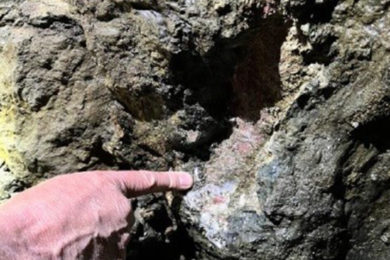Martin Engineering has introduced custom-engineered transfer chutes, helping to deliver material control from the time it leaves the conveyor discharge pulley until it reaches the receiving belt. By managing the material speed and direction, Martin® Inertial FlowTM transfer chutes can minimise impact and wear on liners and belts, while containing the dust and spillage that are often generated at transfer points.
The engineered flow chutes employ special geometries that capture and concentrate the material stream as it travels through the chute. Every design is tailored to suit the specific material characteristics and conveyor systems of the individual customer, rather than using stock products and attempting to make them work. These Inertial Flow transfer chutes provide the dual benefits of minimising aeration and preventing buildup within the chute, particularly important when dealing with combustible materials.
“Transfer points should never be a production bottleneck,” commented Martin Product Development Engineer Justin Malohn. “By testing the customer’s specific bulk material and applying those properties as the initial step in chute design, we can develop a transfer that meets capacity while minimising the potential for build-up and chute plugging.
They also incorporate replaceable liners, allowing operators to unbolt the enclosure for simplified replacement of worn components without confined space entry.
Engineered chutes typically employ a ‘hood and spoon’ transfer, with the hood discharge chute at the top of the system and a spoon receiving chute to place material onto the belt being loaded. Martin Engineering components are custom-designed to suit the characteristics of the conveyed product and the materials used for chute construction.
“The hood minimises expansion of the material stream, directing it downward,” Malohn explained. “The spoon provides a curved loading chute for a smooth line of descent, consistently feeding the material at a specific speed and direction to minimise impact in the loading zone.”
The goal is to confine the material stream and reduce air entrainment, while directing the moving material onto the receiving belt with minimal impact. Successful designs reduce spillage, abrasion, dust and premature wear. This control also helps ensure that material is centre-loaded on the belt, avoiding mistracking and fugitive material.
To achieve the optimum hood, spoon and settling area, Martin Engineering’s engineered flow chutes are designed using 3D computer-based flow and modeling to define the geometry. “The direction and force of impact should maintain as much momentum as possible, ideally with an impact angle of no more than 8-12°,” Malohn said.
Designers use detailed information about the specific material characteristics and the parameters of the conveyor system itself, including the feed system, belt properties, support structure and transfer distances. Martin Engineering also has in-house capability to perform comprehensive bulk material testing to obtain critical friction values, using customer-specific materials, belt construction and liner materials.
By controlling the velocity and force of impact in the load zone to match the belt speed and direction, the engineered systems mitigate material splash, turbulence and dust. The low-turbulence, low-impact loading and controlled airflow can eliminate the need for baghouse dust collection systems, and the stable material path contributes to improved transfer, while minimising belt abrasion and spillage.








